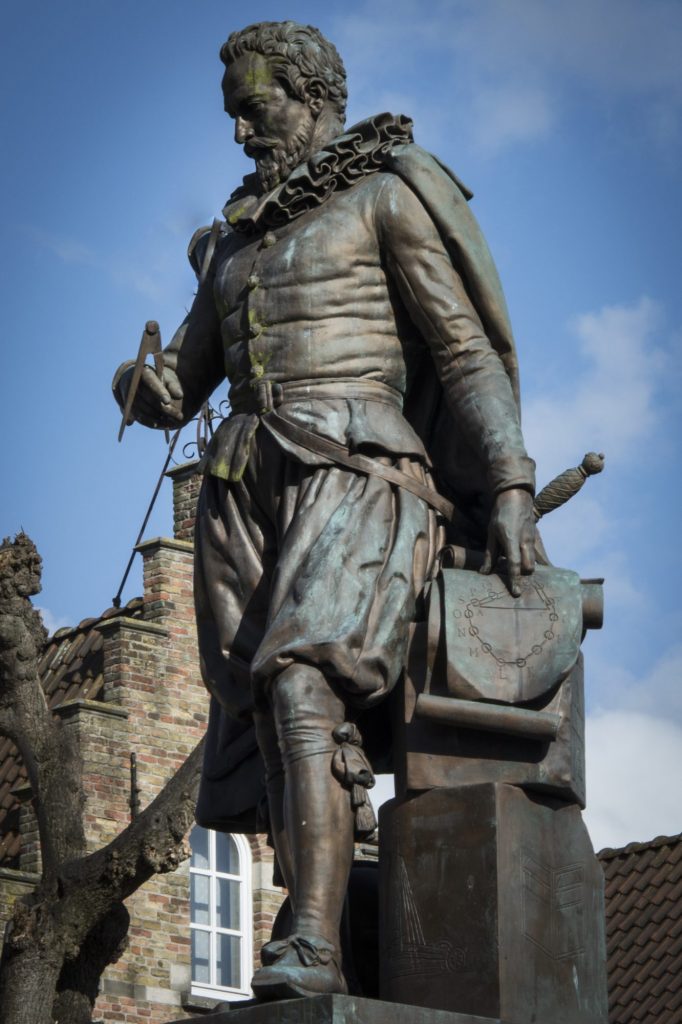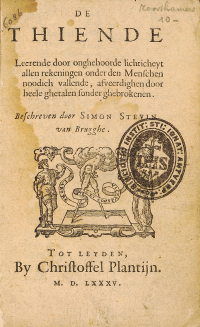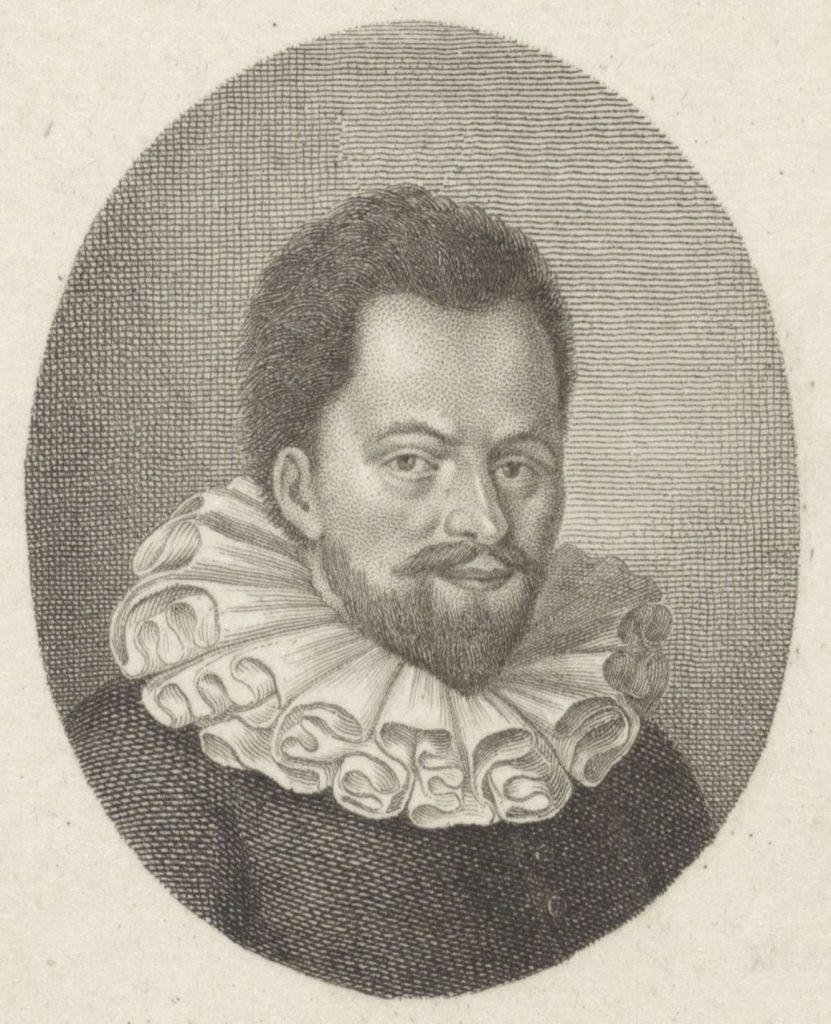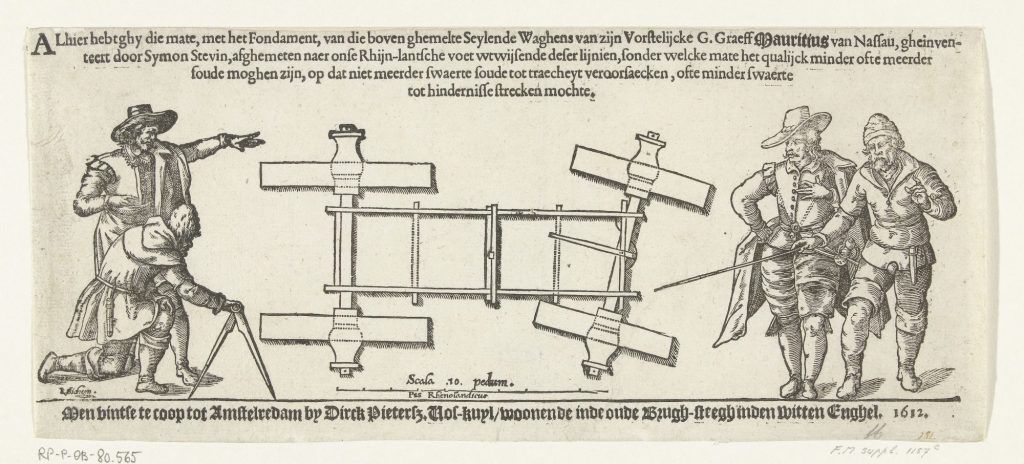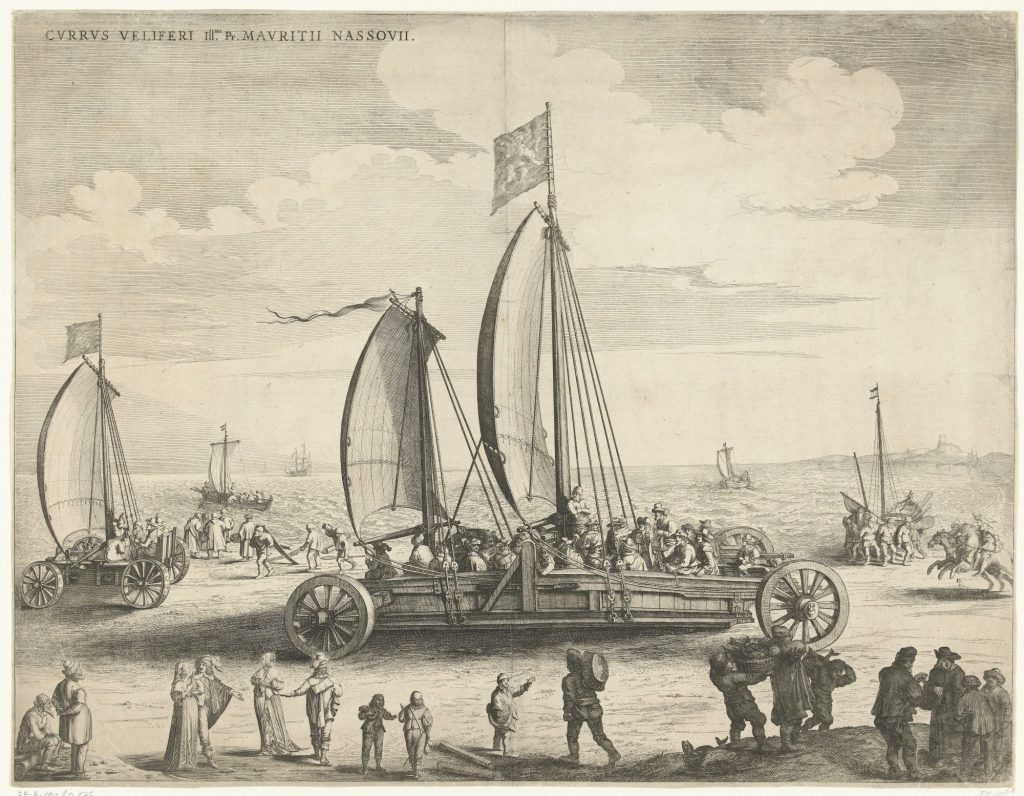Every July I leave The Hague for a week of singing in beautiful Bruges. On Simon Stevin Square in Bruges are restaurants, many with terraces, that serve mussels or Flemish stew. Whilst sitting there and enjoying myself I realized that Simon Stevin’s journey was just the other way around: from Bruges to The Hague.
Simon Stevin -- mathematician, physicist and military engineer
Simon Stevin was born in Bruges in 1548. His exact date of birth is unknown, as is much of his early life. Probably from 1571 onwards he spent time in Poland, Prussia, Sweden and Norway. In his works are references to experiences he had in those countries, in improving ports and waterways.
To the Northerly Netherlands
In 1581 Stevin went to Leiden. In the city archives you can find the registration of Symon Stephani van Brueg as student. On February 16, 1583 he enrolled as student at the University of Leiden, which had been founded less than a decade before, in 1575.
He wasn’t just a theorist. He was also an inventor, for instance in the field of drainage. He developed improvements for watermills especially the ones that were wind-powered. Together with the mayor of Delft he built several windmills around that city. This mayor was Johan de Groot, father of the famous legal scholar, Hugo de Groot, also known as Grotius.
In the service of Prince Maurits and the States General
Around 1593 Stevin became a personal teacher of Prince Maurits, stadholder of Holland and Zeeland, who also was captain-general of the army. Maurits had a great interest in applied mathematics and hired Stevin as his tutor. In the course of his work for Prince Maurits, Stevin was also commissioned with the design and arrangement of army camps, became a member of several committees judging nautical inventions, and provided guidance for the founding of an school of engineering at the University of Leiden. He made a point of recommending that the engineering school provide instruction in the Dutch language, so as to attract students who had not mastered Latin.
Personal life
Simon Stevin eventually relocated to The Hague and married Catharina Cray, with whom he had four children. In March, 1612, he spent 3800 guilders on the building of a house that still exists today. You can find it on Raamstraat 47 with a bust of Stevin at its front, placed in 1898 – the year of the 350th anniversary of his birth.
He died in 1620. Again we don’t know the actual date. Based on documents we know that he was still alive on February 20 and that his death took place before April 18.
Birthday present for Prince Maurits
In 1601 Stevin came up with a very original birthday present for Prins Maurits: a sail-powered carriage called a sand yacht. In 1602 they took the first ride in the presence of 27 Dutch and foreign dignitaries. They rode from Scheveningen to Petten in 2 hour,s averaging 50 km per hour — very fast in those days! The sand yacht was used to entertain guests for a long time, but by the beginning of the 19th century it had become worn out and was sold off.
Seaside Celebrations
A ride from Scheveningen to Petten along the beach would not be as easy as it was in 1602. Any idea what obstacle Stevin would face today?
I tell you more about historical events in the city and on the beach during my bicycle tour From City to Sea.
Are you a singer and do you understand Dutch? If so, do consider taking part in the choir weekends of the Kooracademie Brugge
*Photo: Chris Castelein
**Source: Flandrica.be | Museum Plantin-Moretus
***Collection Rijksmuseum
